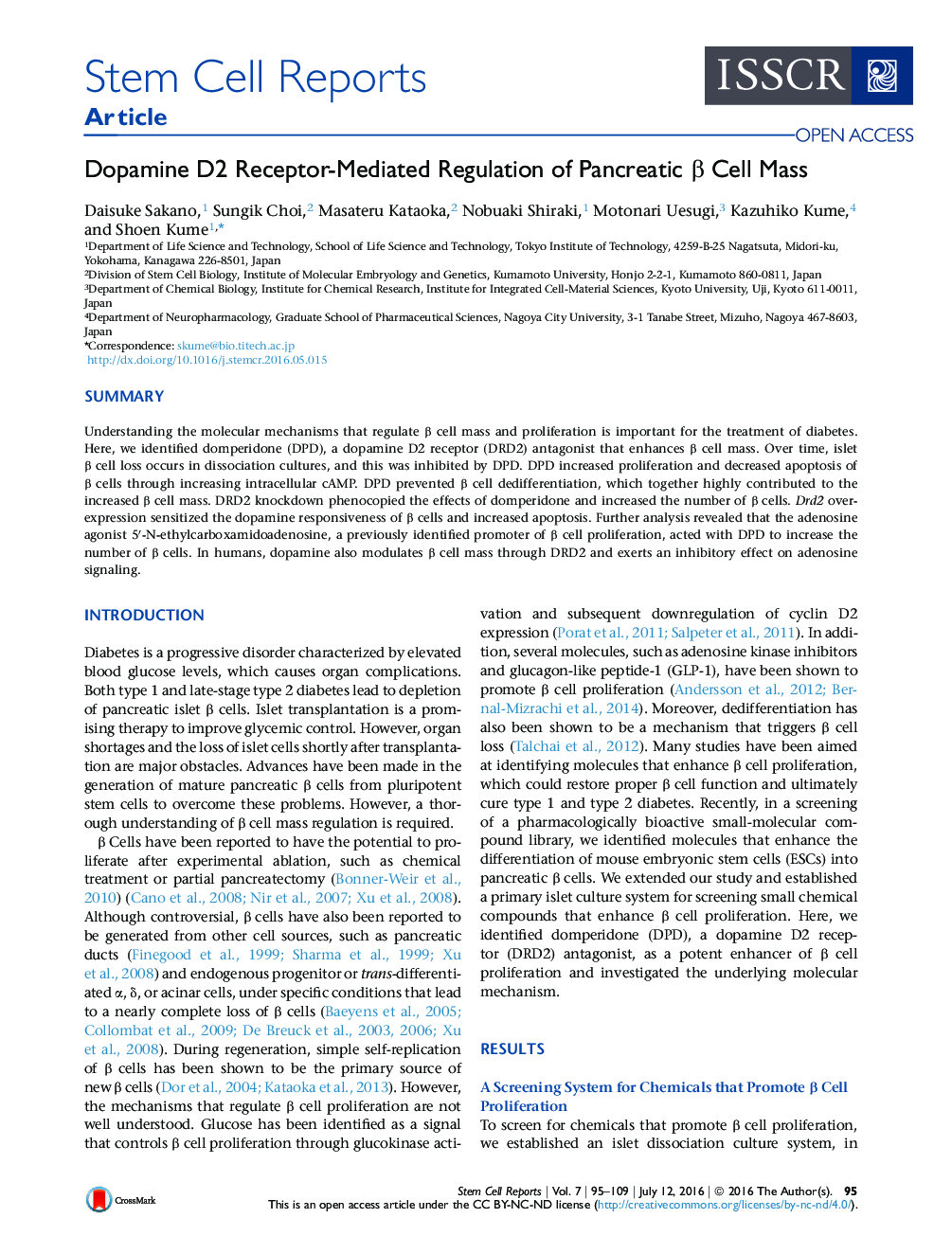| Article ID | Journal | Published Year | Pages | File Type |
|---|---|---|---|---|
| 2093245 | Stem Cell Reports | 2016 | 15 Pages |
•Dopamine inhibits dedifferentiation and proliferation, and promotes apoptosis of β cells•Dopamine confers its action through binding to DRD2 and decreasing cAMP•Dopamine-DRD2 signal also functions through interaction with adenosine-ADORA2A signal•Dopamine-DRD2-cAMP signal is a potential target for β cell regeneration
SummaryUnderstanding the molecular mechanisms that regulate β cell mass and proliferation is important for the treatment of diabetes. Here, we identified domperidone (DPD), a dopamine D2 receptor (DRD2) antagonist that enhances β cell mass. Over time, islet β cell loss occurs in dissociation cultures, and this was inhibited by DPD. DPD increased proliferation and decreased apoptosis of β cells through increasing intracellular cAMP. DPD prevented β cell dedifferentiation, which together highly contributed to the increased β cell mass. DRD2 knockdown phenocopied the effects of domperidone and increased the number of β cells. Drd2 overexpression sensitized the dopamine responsiveness of β cells and increased apoptosis. Further analysis revealed that the adenosine agonist 5′-N-ethylcarboxamidoadenosine, a previously identified promoter of β cell proliferation, acted with DPD to increase the number of β cells. In humans, dopamine also modulates β cell mass through DRD2 and exerts an inhibitory effect on adenosine signaling.
Graphical AbstractFigure optionsDownload full-size imageDownload as PowerPoint slide
